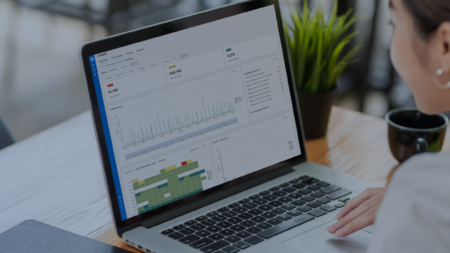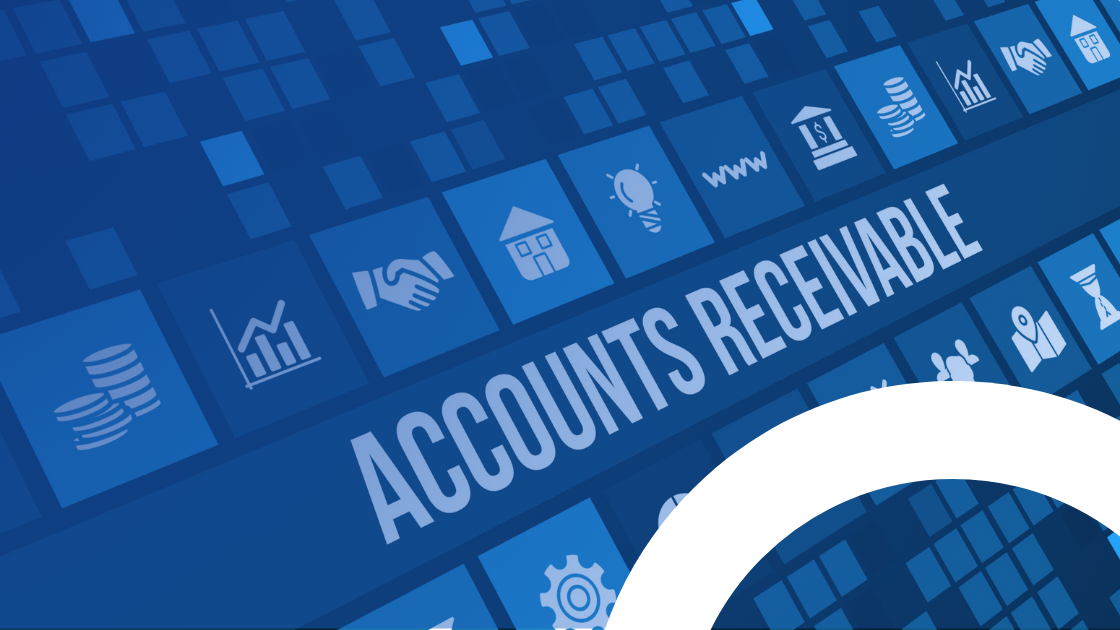In today’s fast-moving business landscape, the accounts receivable (AR) function is under increasing pressure—not just to track invoices, but to actively protect cash flow, spot risk, and drive better decision-making. A traditional AR dashboard offers visibility into metrics like days sales outstanding (DSO) or overdue balances—but what if your dashboard could do more?
By combining AI-powered analytics with intelligent dashboards, organizations can move beyond static reporting to continuous monitoring, proactive risk mitigation, and smarter financial oversight. This is the future of accounts receivable oversight—and it’s already here.
What Is an Accounts Receivable Dashboard?
An accounts receivable dashboard consolidates AR data into a centralized interface, enabling finance teams to monitor key metrics, track payment behaviors, and support strategic decisions. But the real value comes when the dashboard doesn’t just display data—it reveals the story behind it.
When paired with advanced AI, an AR dashboard can surface anomalies, uncover payment risks, and continuously assess financial health. This approach goes beyond collections management—it transforms how businesses safeguard working capital and maintain operational resilience.
Key Metrics That Matter
A high-performing AR dashboard should help AR teams and finance leaders prioritize the right actions. Here are some essential metrics and features to include:
- Days Sales Outstanding (DSO): Measures how long it takes to collect payments
- Aging Buckets: Categorizes receivables based on how overdue they are
- Collection Effectiveness Index (CEI): Evaluates the efficiency of collection strategies
- Average Days Delinquent (ADD): Tracks the average time invoices remain overdue
- Top Customers by Outstanding Balance: Prioritizes follow-ups with high-impact accounts
- Payment Pattern Analysis: Identifies shifts in customer behavior that may signal credit risk
- Invoice Status Overview: Tracks which invoices are paid, pending, or disputed
When enriched with AI-driven insights, these metrics become more than just numbers—they become early indicators of financial exposure or opportunity.
The Problem with Traditional AR Dashboards
While dashboards have become standard in AR teams, most solutions only reflect what’s already happened. They rely on sampled data or basic trend analysis, offering a historical snapshot rather than a dynamic, forward-looking view. This creates several limitations:
- Blind spots in risk assessment due to surface-level data visualization
- Lag in decision-making because insights only emerge after problems escalate
- Inability to detect subtle patterns that could indicate fraud, error, or control gaps
To truly elevate the AR function, businesses need a platform that not only displays metrics—but continuously analyzes, learns, and flags what matters most.
How AI-Powered Dashboards Transform AR Oversight
With an AI-powered AR dashboard—like the kind MindBridge enables—finance teams don’t just monitor performance. They gain a second set of eyes on every transaction. Here’s how:
1. Continuous Risk Assessment
Unlike static dashboards, AI models continuously analyze AR data streams to detect unusual activity—such as shifts in payment timing, unexpected behavior from previously reliable customers, or inconsistent application of credit terms. These signals surface risk before it’s reflected in KPIs.
2. Anomaly Detection at Scale
MindBridge’s ensemble AI approach combines business rules, statistical models, and unsupervised machine learning to flag outliers across massive datasets. It surfaces the “unknown unknowns”—patterns that traditional dashboards would never catch.
3. Stronger Financial Governance
By embedding AI into AR oversight, businesses reduce their reliance on periodic, manual reviews. Instead, they gain ongoing, automated insights that support governance, reduce error rates, and improve internal controls.
4. Smarter Collections Strategy
AI can prioritize which accounts to escalate based on risk scoring, not just dollar amount. This means your AR team isn’t just working harder—they’re working smarter.
From Visibility to Assurance: The MindBridge Approach to AR
MindBridge brings clarity and confidence to accounts receivable by embedding AI across the full order-to-cash lifecycle—including quote, sales order, fulfillment, invoice, payment, and credit memo.
This isn’t just about aggregating metrics. Our platform ingests structured data from ERP systems, subledgers, billing platforms, and other financial systems to create a unified, risk-intelligent view of AR operations.
By analyzing transaction flows and relationships across the entire process, MindBridge surfaces issues that traditional dashboards simply can’t see. These include anomalies in payment behavior, delays between invoice generation and payment, inconsistent use of credit memos, or unusual adjustments. Patterns that could indicate fraud or policy violations are flagged early—before they impact cash flow or compliance.
The result is more than oversight—it’s continuous assurance.
Finance leaders gain dynamic risk intelligence they can act on. AR managers get the insights they need to fine-tune collections and customer communications. And the business as a whole benefits from stronger governance, fewer surprises, and faster time-to-insight.
Many large enterprises, such as Chevron, moved quickly to partner with MindBridge to achieve this kindof scalable insight-driven oversight.
Building an Intelligent AR Dashboard: What to Look For
If you’re evaluating dashboard software for your AR function, go beyond surface features. Look for a solution that enables:
- Customizable Visualizations tailored to roles (AR specialist, controller, CFO)
- Drill-down Capabilities to explore customer-specific data and invoice history
- Automated Alerts triggered by unusual activity, overdue thresholds, or high-risk accounts
- ERP Integration to ensure consistency and completeness across financial systems
- AI-Driven Insights to detect emerging risks and support proactive action
Beyond Metrics: Turning AR Dashboards into Decision Intelligence Tools
The role of AR is no longer limited to collections. It’s a strategic function that impacts liquidity, credit exposure, customer relationships, and business resilience. By implementing intelligent dashboards powered by AI, finance leaders can:
- Monitor cash flow vulnerabilities before they impact operations
- Strengthen working capital efficiency with ongoing insights
- Enhance cross-functional collaboration between AR, FP&A, and treasury teams
- Support auditable reporting that stands up to scrutiny from leadership and regulators
MindBridge: Empowering Smarter AR Oversight
MindBridge helps organizations transform how they manage AR by embedding AI into every layer of financial oversight. Our platform enables:
- Continuous monitoring of AR transactions to flag anomalies as they emerge
- Proactive risk insights that go beyond surface metrics
- Enhanced fraud prevention through advanced detection algorithms
- Automated reporting that reduces manual workload and increases transparency
Whether you’re a CFO looking for enterprise-wide visibility, or an AR manager optimizing collections, MindBridge delivers the intelligence needed to manage risk, maintain control, and drive better outcomes.
Ready to Evolve Your AR Function?
It’s time to move beyond static metrics and periodic reporting. With intelligent dashboards powered by AI, your accounts receivable team can unlock deeper insights, safeguard cash flow, and guide smarter financial decisions—every day.
Book a demo today and discover how MindBridge brings intelligent oversight to your AR operations.



